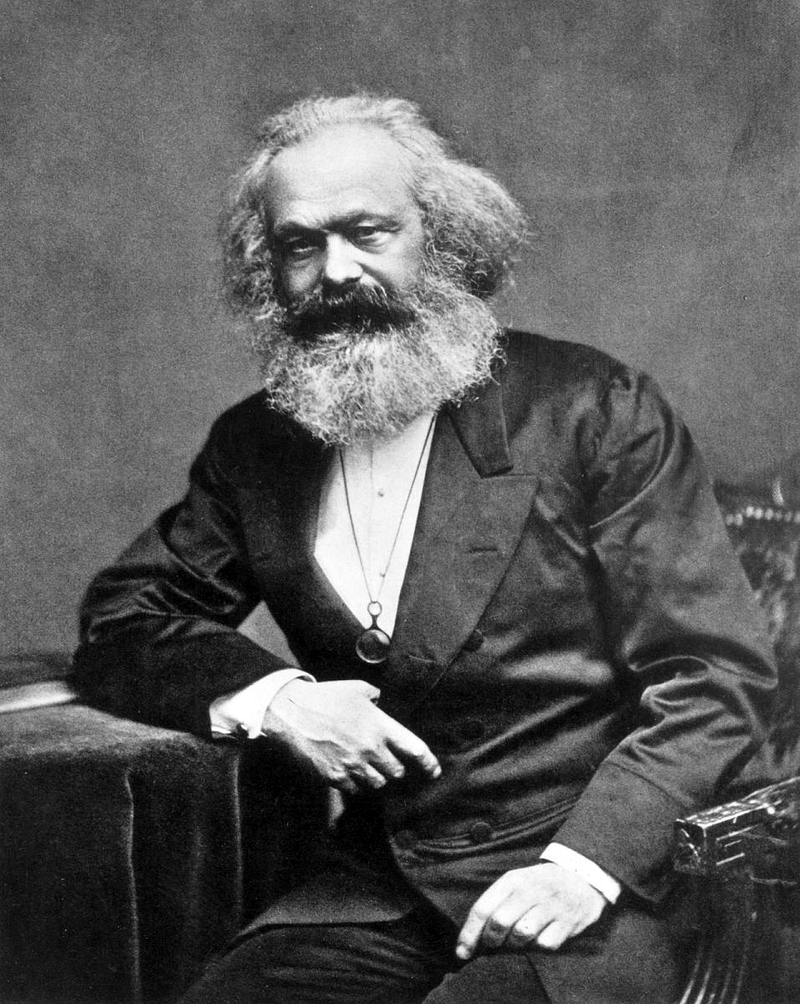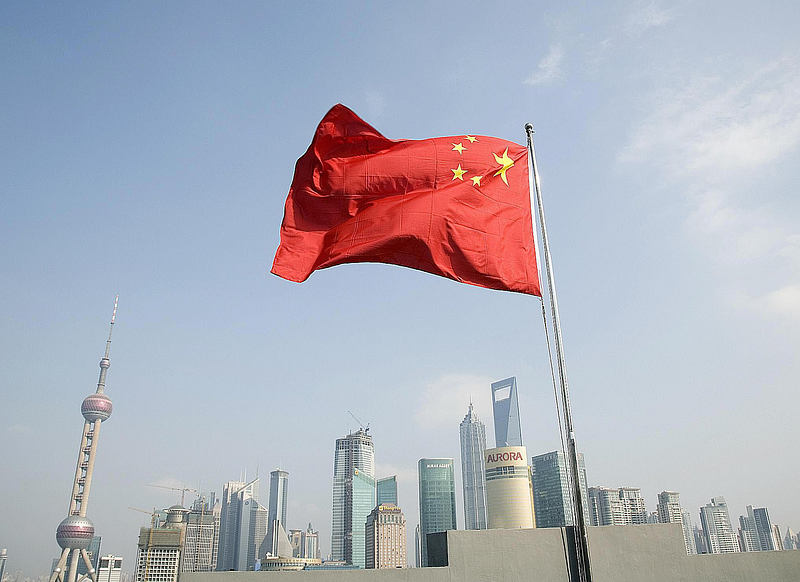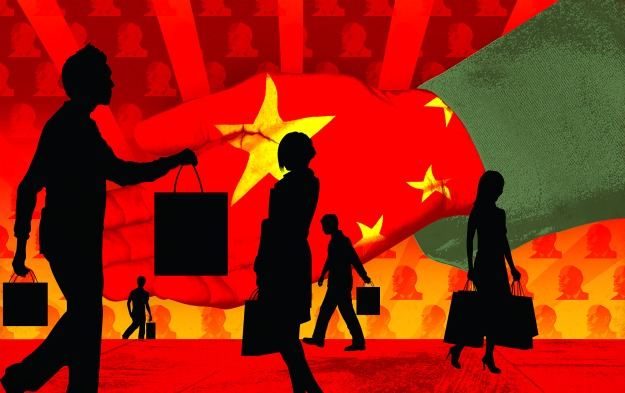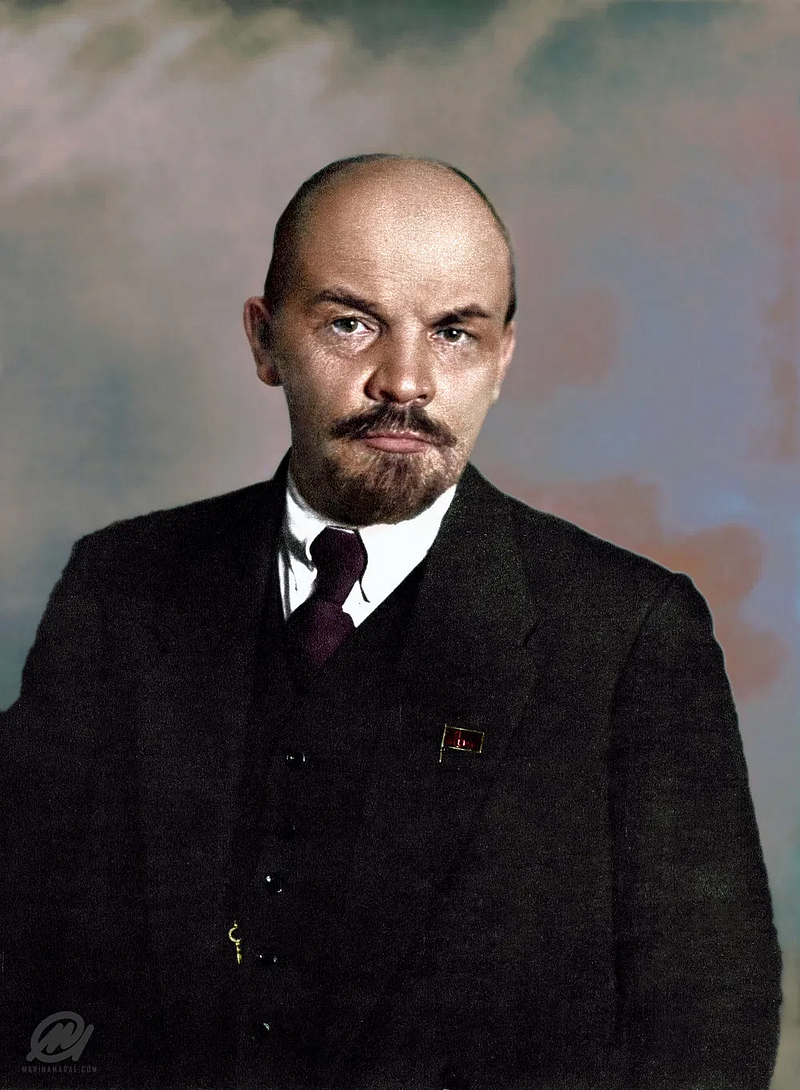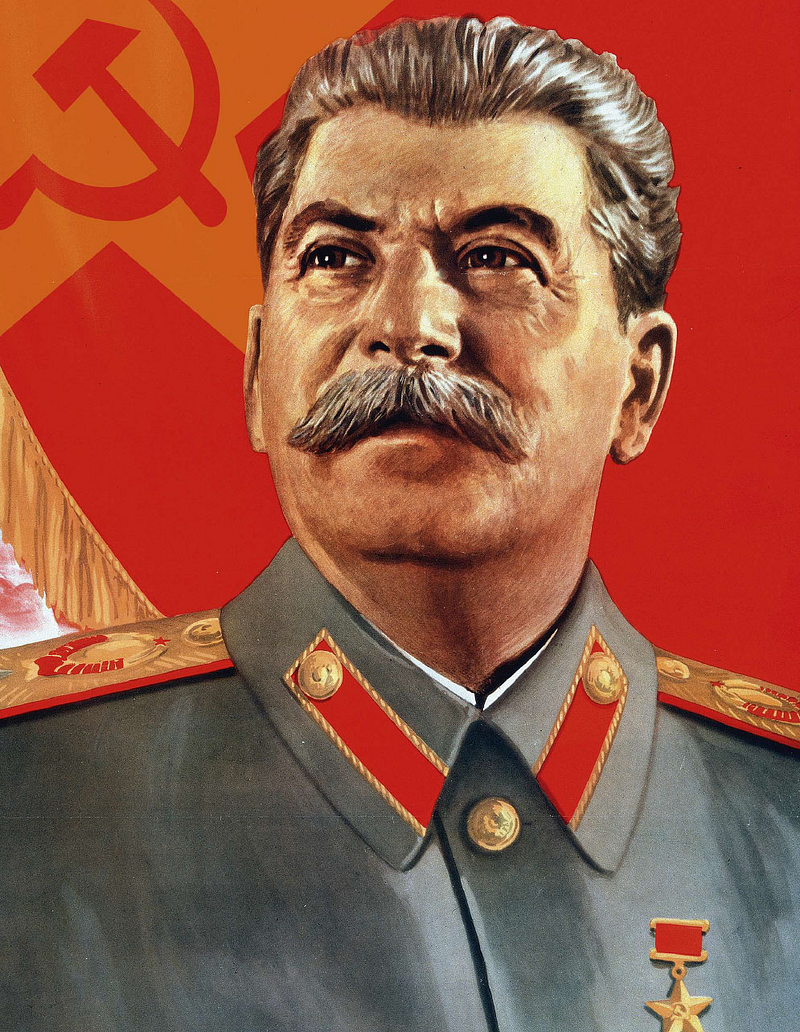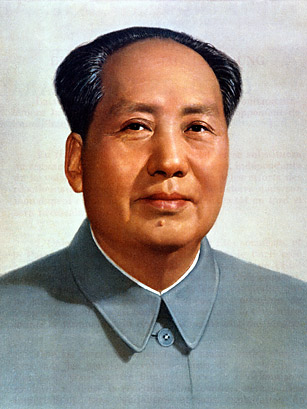Communism: Its Rise and Fall
The Origins of Communism
Despite the popular misconception, communism did not originate from Russia. Instead, the idea of communism had been circulating in Europe for hundreds of years until it was put into pen and paper by German philosopher, Karl Marx, otherwise known as the Father of Communism.
Marx was born in 1818, Trier Germany to Jewish parents who abandoned their faith to assimilate into an increasingly anti-semitic society.
Karl Marx was a vocal critic of the working conditions in Western Europe, where workers were often subjected to harsh environments for measly pay. Marx wrote and published radical ideas about the capitalist system, which would lead to his exile from Germany and several cities like Paris and Brussels banning Marx from ever entering. He was even considered a political threat in Germany.
Marx travelled from city to city due to his exile from Germany. Eventually, he met Friedrich Engels, a German philosopher in 1844. The pair had similar principles and this would blossom into a partnership lasting almost 40 years.
Workers of the world, unite! You have nothing to lose but your chains. — Karl Marx
Marx and Engels would then work together to publish The Communist Manifesto in 1848, not knowing that it would become one of the most influential communist texts written. In the manifesto, Marx argued that the average worker, known as the proletariat, suffered under capitalism where the upper class, known as the bourgeoisie. The proletariat depended on the bourgeoisie to produce goods as the upper class owned factories, machinery and raw materials. Yet the proletariat was not compensated properly while the bourgeoisie benefited from their hard work. Hence, Marx believed that the only way to liberate the proletariat from this oppressive system was through a revolution. According to him, a workers’ uprising was inevitable.
Marx would, later on, write Das Kapital, otherwise known as ‘Capital: A Critique of Political Economy. The Russian imperial censors allowed the publication of Das Kapital, thinking it was too dense to cause any significant impact on the Russian people. What they did not expect was for Das Kapital to sell like hotcakes, and it eventually became the inspiration of the Russian Revolution in 1917.
What makes a communist state communist?
Karl Marx suggested that a country has to go through 3 phases to become a communist state.
Phase 1: A Revolution
Marx deems a revolution necessary for the proletariat to overthrow the bourgeoisie since, under a capitalist system, the upper class would put their interests over the wellbeing of the working class. Hence, no matter how hard one tries to introduce equality to society, it will not be successful. By overthrowing the ruling class, the proletariat will then have a say in how the economy is run.
Phase 2: Dictatorship
A leader, often dictator-like, is then chosen to establish a new government. They decide on how the system is to be run, implement laws and policies, dictate what activities are to be carried out and what activities are not, and even marriages. Once the new system is established, capitalists will have no choice but to surrender to the new system that favours all instead of the selfish interests of a few.
Phase 3: Purging
In this phase, the Communist Party gets rid of all non-communists, often by execution. By then, the Communist Party would have achieved supreme equality and the demolition of socioeconomic classes. A utopia where everyone is equal is now formed.
Communism is not love. Communism is a hammer which we use to crush the enemy. — Mao Zedong
A communist state is also said to have the following 10 features:
Central banking system
Government controlled education
Government controlled labour
Government ownership of transportation and communication vehicles
Government ownership of agricultural means and factories
Total abolition of private property
Property rights confiscation
Heavy income tax on everyone
Elimination of rights of inheritance
Regional planning
In theory, a communist country would also be a state-less country, meaning there would not be a government. Yet, as observed in countries like Laos, China and North Korea, that is not the case. Hence this is why no communist country (even North Korea) is fully communist.
Are communist states truly communist?
Decades after the publication of The Communist Manifesto in 1848, the world saw its first communist state when Vladimir Lenin overthrew the Romanov Empire, forming the Soviet Union. The Bolsheviks (Lenin’s political party) ascribed to Marxism, yet communism in the Soviet Union was not quite how Karl Marx envisioned it to be.
First of all, there is a fundamental difference between Marxism (Karl Marx’s ideology) and communism. Marxism is a theory, a political ideology, and communism is the practical implementation based on Marxism. Communism is a political system. Marxists believe that a feudalist society will transition to a socialist society, then only communism. Whereas communists believe that the transition to a communist state can only be achieved by revolution.
Marx’s model of communism emphasised a stateless and classless society. There would be no government, no ruling class, no class division, but it is evident that that is not the case in all pre-existing and current communist states. Take North Korea for example, the Kim family is and has been the ruling family since its establishment in 1948. There is also an evident class divide in North Korea as they use the system Songbun — a system of ascribed status based on the political, social and economic background of an individual’s direct ancestors.
Even the Soviet Union was never truly communist. Under a true communist system, the workers have full control over the production. The workers would oversee the process of production, deciding on how it is used etc. Yet after the October Revolution, the Bolsheviks implemented a layer of state managers to oversee and operate the production in the name of the people.
Some would say there has never been a truly communist state, others argue that the term ‘communist’ was used as an alternative to dictatorship.
How did communism evolve?
As mentioned above, Karl Marx’s vision of communism was never truly implemented in the various communist states. Although the Marxist theory made sense, it was just a theory and whether or not it could be implemented practically was a whole other question. Even then, Karl Marx’s ideas have evolved. Thus, what Karl Marx believed in may not essentially be what current Marxists believe in.
The leaders of communist states like Vladimir Lenin and Mao Ze Dong would go on to develop their interpretation of communism based on Marxism. Those interpretations were then implemented into their communist states. Thus, branches of Marxism were formed.
The Different Types of Communism
As there are many, many different types and theories developed over time, we won’t be going through every single type and rather focus on some of the more prominent theories that evolved. The types and theories of communism can be differentiated into two categories, Marxist communism and non-Marxist communism.
Marxist communism
Marxism
According to the Marxist theory, conflict arises between the proletariat and the bourgeoisie. The bourgeoisie, also known as the ruling class, possesses the means of production. The proletariat, the working class that provides labour for production, are oppressed and exploited by the bourgeoisie, as they are not properly compensated for their work. While the working class slave away, the ruling class benefits from their labour.
The class conflict would then lead to a short term crisis where the bourgeoisie struggled to manage intensifying dissatisfaction among the proletariat. If the crisis continues to spiral, the oppressed start to form a proletariat revolution, which, if successful, could lead to the establishment of a socialist society and then transition into a communist society.
Leninism
A major question from Marxism was how a truly communist society would function. If the proletariat were organised as the new ruling party, wouldn’t that defy the whole communist ideology? How would a utopia be formed then?
Lenin’s answer to the question was that, instead of transitioning from a capitalist society to a socialist one, and then a communist society, the bourgeoisie should be destroyed. Only then would a classless society exist and over time, any class differences would disappear.
However, when the revolution happened, Lenin’s actions were very much different from his theory. At the start of the revolution, Lenin proposed that the revolution was to be led by a group of Marxist intellectuals known as the Vanguard of the Proletariat. After the revolution, the vanguard was supposed to fade away, but they never did. Instead, the group of elites refused to give up their power and they became The Communist Party.
Democracy was still present to some extent within Leninism. Members of the Communist Party would vote to make political decisions
The goal of socialism is communism — Vladimir Lenin
Marxism-Leninism
Marxism-Leninism was developed by Joseph Stalin, the successor of Vladimir Lenin. It was based on both Marxism and Leninism as its name suggested. Stalin’s theory received much criticism from other communists as they argued that Marxism-Leninism established state capitalism instead of socialism. Even in the modern-day, historians can’t agree on whether Stalin actually followed Marx’s and Lenin’s theory as some aspects of Marxism-Leninism deviated from the original theory, Marxism.
Under Marxism-Leninism, the proletarian revolution is to be led by a single communist party that would later establish a communist-party led state. The state would be in control of the economy and suppress the bourgeoisie. Politically wise, there would be direct elections to choose key administrative officials.
Stalinism instead was used to describe Stalin’s way of governance during his rule in the Soviet Union. This included the creation of one-party totalitarian police and rapid industrialization. Stalin’s ruling period is associated with terror and totalitarianism as the Stalin regime eliminated everyone they deemed a threat. The Bourgeoisie, non-Soviet nationalist, political dissidents and even peasants that were better off financially, were repressed. They were faced with mass arrests, forced labour, imprisonment and even execution.
Ideas are far more powerful than guns. We don’t let our people have guns. Why should we let them have ideas? — Joseph Stalin
Maoism
Mao Ze Dong is arguably one of the most influential Chinese people in the 20th century. He was the founding father of the People’s Republic of China and ruled as the chairman of the China Communist Party for 27 years until his death in 1976. Mao was a totalitarian and he ruled the PRC with an iron fist. He supported the idea of a revolutionary front, the ‘Vanguard of the Proletariat’, and much like Lenin, he believed that the vanguard should not wither away. This is a very radical deviation from Marxism.
Such beliefs were shown in his actions when Mao committed the largest massacre in the 20th century. Mao wanted to establish a fully socialist country and by doing so, he obliterated all possible threats. Among the threats were intellectuals, party officials and teachers who faced public humiliation, torture and death. Although there is no official figure, it is estimated that 500,000 to two million people lost their lives during this persecution, also known as The Cultural Revolution.
To read too many books is harmful — Mao Ze Dong
Non-Marxist communism
Beyond Marxist communism, some sub-ideologies of communism deviate away from the typical aspects of Marxist theory. Here, we will take a look at two of them: religious communism, and anarchist communism.
Religious Communism
Early forms of communism came into existence even before the time of Karl Marx. One of these is religious communism, or more particularly, Christian communism. The basic principles behind Christian communism stem from the belief that “No one claimed that any of their possessions was their own, but they shared everything they had”, as quoted from Act 4:32. This act of pooling together materialistic assets was voluntary, an act that was fuelled by their strong belief in shared life and nothing more. Overall, this form of communism was more of an ideology, rather than a governmental system that housed a nation.
Anarchist Communism
Also known as anarcho-communism, this political theory focuses on advocating for the abolition of the state, capitalism, social hierarchy, class distinctions and private properties. Some distinguished theorists behind the framework of anarchist communism include Peter Kropotkin, Errico Malatesta, and Nestor Makhno, to name a few. The philosophy of anarcho-communism stemmed from the belief that individuals should be allowed to meet their own needs based upon their own choice.
Then, you may be wondering: aren’t anarchist communism and Marxist communism just the same concept? Are their beliefs not within the same domain? One discernable difference between the two is their standpoint in terms of the state — whilst anarchist communism wishes to be stateless, Marxist communism stands for the development of a transitional state that only exists to function as an administrator for the bourgeois’ affairs.
The Spread of Communism
After the Communist Manifesto was published in the year 1848, several revolutions flared up, including Austria, Hungary, France and German states, in an attempt to fight for the people’s freedom. Yet, it wasn’t until the 1900s that a more outstanding surge in the spread of communism was observed.
Perhaps the most notable revolution in the history of communism would be the Russian Revolution in 1917. Before WWI had even ended, the Tsar had proven to the public that he was unfit to lead the country. With declining fuel supplies, a deteriorating economy, and huge war losses, demonstrators took to the streets, and the Tsar was abdicated from the throne. A provisional government was soon set up; still, it was weak in solving the domestic problems that the citizens were facing, such as dwindling food supplies.
In October of the same year, Vladimir Lenin led the Bolsheviks in a successful uprising, and he became the leader of the world’s first communist state. Soon after, civil war broke out in Russia as the Bolsheviks and the opposition White Armies went head-to-head in a battle for power. The former emerged as the victors, and with their success came the establishment of the Soviet Union.
The Soviet Union became the foundation for the widespread proliferation of communism across the globe, and the Comintern was the blueprint. Also known as the Third International, the Comintern aimed to oversee the development of communist states, mainly in Eastern Europe.
Yet, it wasn’t until the end of WWII that communism started to spread extensively. Communist states were set up in most of Eastern Europe, including Poland, Romania, Czechoslovakia to name a few; these were known as the USSR’s ‘satellite states’. The rise in communism was nothing short of prominent, and it garnered the attention of the US. Under the fear of the ‘domino effect’, the belief that communism would spread from one country to its surrounding neighbours, the Cold War came to existence as a long-lasting period of tension between the US and the Soviet Union.
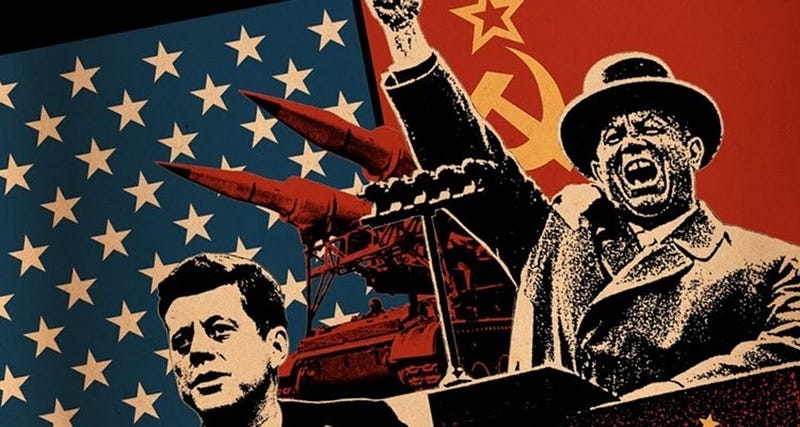
Against the backdrop of the Cold War, the split between capitalism and communism fuelled the Korean War and the Vietnam War. In both, communism had its fair share of successes — the armistice called at the end of the war led to North Korea retaining its communist state. In the Vietnam War, Saigon fell to communism, and so did the neighbouring countries of Laos and Cambodia.
Needless to say, the spread of communism was omnipresent in the 1900s. Yet, the decline of communism began in the same century, leading up to the dissolution of the Soviet Union 69 years after its formation.
Countries Under Communism
Now, let’s take a look at a few countries that were, and some of them still are, under communism.
China
Communism first landed on China’s shores in the 1910s, at the time of the May 4th Movement that fought for socio-political reform in the nation. Subsequently, the Chinese Communist Party was formed. However, the CCP’s ideology clashed with that of the other main political party at the time, the nationalist Kuomintang. Although there was a lull in the conflict between the two during the Japanese invasion of China, the end of the Sino-Japanese War saw the two parties locked in a three-year-long civil war.
Eventually, the Kuomintang was defeated by the CCP. As the man at the forefront of the party’s military during the war, Mao Zedong formed the People’s Republic of China on October 1st, 1949. Work began underway to reform China, with initial aid from the Soviet state.
Mao Zedong would go on to revolutionise China through a series of extremely radical actions, including the Great Leap Forward, a five-year-long economic plan that resulted in a great famine that killed as many as 45 million citizens across the country; as well as the aforementioned Cultural Revolution.
Vietnam
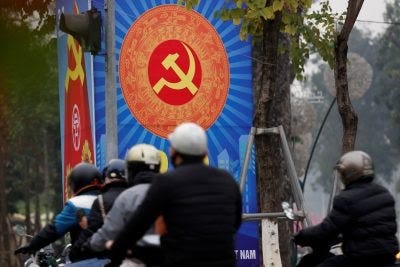
One of the most formidable men in Vietnamese history would be none other than Ho Chi Minh. The first signs of communism in the country came to light when he founded the Indochinese Communist Party in 1930. (French Indochina refers to the grouping of Vietnam, Laos and Cambodia under the colonisation of France before WWII). During WWII, when the Japanese invaded, Ho formed a coalition known as the Viet Minh in retaliation to the occupation.
At the end of WWII, with the Japanese having lost the war, the French tried to assert power over Vietnam once more; yet, the Viet Minh managed to drive them out, after a successful feat at the Battle of Dien Bien Phu. However, peace was yet to be achieved, for the infamous Vietnam War would lock Vietnam in a devastating conflict against the USA for the next 22 years.
Threatened by the growing communist party in Vietnam, the USA began to send over financial and military aid to the non-communist South Vietnamese government in an attempt to quell the Viet Minh. Tensions skyrocketed after the Gulf of Tonkin incident, and soon enough, the USA had directly involved itself in the rollback against communism.
In the end, communism prevailed. The fall of Saigon marked the end of the Vietnam War. North and South Vietnam merged to form the Socialist Republic of Vietnam in 1975. Measures were taken to help build back the nation in the post-war atmosphere, but central planning proved futile in improving Vietnam’s economy. It was not until the introduction of Đổi Mới, a set of market reforms, that the economy began to pick up at a more rapid pace. The percentage of citizens living below the poverty line managed to decrease from 70% to just 20% today. To this day, Vietnam remains a one-party communist state.
Cuba
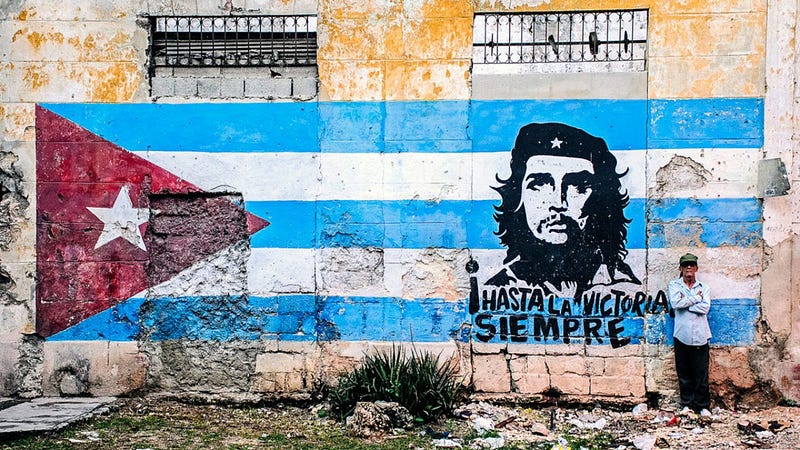
Communism in Cuba arose at the time of the tyrant Fulgencio Batista’s dictatorship. The Cuban Revolution, led by Fidel Castro, lasted for 6 years. Despite his initial failures, including the misfiring of the 26th of July Movement in 1953, Castro remained resilient. He and Che Guevara, an infamous communist figure who played a major role in the revolution as well, led the communist party to eventually overthrow Batista’s government in 1959. Soon after, Castro became the Prime Minister and officially declared Cuba a communist state.
A revolution is not a bed of roses. A revolution is a struggle between the future and the past. — Fidel Castro
Once Castro was in power, his regime granted positive reforms but was largely a harsh and oppressive one. Living standards generally improved, with free healthcare and education. Illiteracy in the country dropped to a mere 5% in the mid-1960s. However, citizens were denied civil and political rights, with thousands jailed, harassed or intimidated under his authoritarian rule. Critics and political opponents faced no mercy under Castro’s rule.
On an international scale, Cuba faced an immense anti-communist threat from the US, who was becoming increasingly suspicious of Castro, especially when Cuba began to share friendly relations with the Soviet Union. Tensions would soon rise and culminate in the Bay of Pigs invasion in 1961, a US-led invasion of Cuba by their exiles; and the Cuban Missile Crisis in 1962 when a nuclear war was almost on the brink of existence.
The Decline of Communism
Given that the rise in communism had become so widespread in the span of a few years, it is intriguing to know that its decline came around in the early 1990s. So why exactly was there a fall in communism? What caused the collapse of the USSR?
To answer those questions, we must first understand how the USSR’s economy operated. At the beginning of its formation, the economy was guided by several five-year plans. These helped the Soviet Union to see an initial growth in its economy. As for the rest of their satellite states, the Council for Mutual Economic Assistance, or COMECON, coordinated the industries and economies of socialist states under the USSR’s control. Over the years, however, the USSR’s economy began to deteriorate due to several factors, owing to the mismanagement of resources, the fall of oil prices (oil and gas supplies were the main sectors that gave the economy much leverage at this time), and ineffective production.
For the satellite states, their economies suffered from stagnation. Since the economy focused more on what the state needed, and less on what the citizens needed, industrial production of goods was inefficient. The production of consumer goods, in particular, was overly neglected, making up only 24% of the USSR’s total output in 1987. Moreover, the iron grip that the USSR had on the states under its control fuelled citizens’ hopes for freedom from the Soviet state.

With that, a string of strikes and revolutions began across Eastern Europe. In Poland, a worker’s trade union called Solidarity organised strikes in protest against new economic policies. Although the government forced it underground, the movement was a huge shake-up in the communist world. The worsening economic state in East Germany prompted citizens to cross the border to capitalist West Germany, which eventually led to the fall of the Berlin Wall separating both states in 1989. Moreover, Hungary saw a series of revolutions, and violence wrecked Romania as police cracked down upon demonstrators protesting against economic reforms.
When Mikhael Gorbachev came into power in 1990, he brought about new changes to the USSR’s political, economic and social policies, most of which catalysed the fall of communism. Some of his most well-known policies included glasnost, which called for transparency and gave communist states freedom of speech to speak up against the Soviet state; and perestroika, i.e. economic reforms that allowed foreign trade and looser controls on businesses. These all prompted demonstrations across Eastern Europe, and a new generation in communist history arose: people power. Through the power of the people, one by one, the satellite states pulled out of the Soviet state, with most of them turning to democracy instead. Eventually, the Soviet Union collapsed in 1991.
All members of the world community should resolutely discard old stereotypes and motivations nurtured by the Cold War, and give up the habit of seeking each other’s weak spots and exploiting them in their own interests. — Mikhail Gorbachev
Still, communism prevailed in other countries. Even without a helping hand from the Soviet Union, Cuba remains communist to this day, and the Chinese Communist Party continues to be the governing political party of China. The trust that citizens had in these nations’ governments was strong, compared to that of those residing in Eastern Europe.
Malaysia & Communism
Malaysia, too, has had a portion of its history dominated by communism. The post-WWII scene saw British Malaya wrecked by a devastated economy, and measures taken by the British to restore the nation to prosperity proved to be futile. In retaliation against the British, the Malayan Communist Party (MCP) opened gunfire on British plantation managers. Consequently, the Malayan Emergency was declared on the 18th of June 1948.
Although it was formally known as an emergency, it was nothing short of a war fought for 12 years. The army of the MCP, known as the Malayan National Liberation Army (MNLA), relied heavily on the foliage of the jungle and used guerilla war tactics against the British. The state of the emergency reached a crescendo with the implementation of Brigg’s Plan, which planned to wear down the communists by cutting off connections between the MNLA and the villagers. Under this plan, as many as 500,000 Malayans were moved to ‘new villages’ to interrupt the MNLA’s supply lines and disrupt communication, done by winning the ‘hearts and minds’ of the civilians.

One of the most defining incidents during this period was none other than the Batang Kali Massacre. On 12 December 1948, British troops entered the village of Batang Kali and killed 24 unarmed civilians, the result of a ruthless order to ‘wipe out anybody they found there’. The victims knew little about the communists, yet the British felt certain that they had been aiding the MNLA. To this day, there has still yet to be a verdict on these atrocious acts inflicted upon innocent Malayans.
“We didn’t know what people were what people. What did we know what communists were?” — Lim Ah Yin
Throughout the emergency, the MCP gradually realised that they were on the losing side of the war. Chin Peng, the leader of the MCP, reached out to Tunku Abdul Rahman to engage in peace talks. However, disagreements led to failed negotiations. Eventually, after Malaysia gained independence in 1957, the strength and support for the MNLA declined considerably, and the remaining MCP members fled to the border of Thailand. The party continued to be active until 1989 when it became apparent to them that their campaign had produced fruitless results. In the end, they signed the HatYai Peace Agreement, and the party was finally dissolved.
Communism: Good or Bad?
Although communism is often seen as a ‘greater evil’, the original idea from which communism was conceived had a good intention. Karl Marx wanted to abolish the system under which normal people like him were oppressed. He wanted a utopia where everyone was equal and lived in harmony.
To some extent, communist states did achieve equality. Although some people in the rural areas of China still live in poverty, poverty rates have fallen from 88% in 1981 to 0.7% in 2015 thanks to the Targeted Poverty Alleviation Project. It goes to show that the ideology of communism itself is not inherently ‘evil’, but whether or not the implementation of communism in a state is good or bad depends on the ruling government. At the end of the day, what is most fundamental is how the leaders of a communist state set the country’s direction and execute their actions accordingly, for the betterment of the citizens.
[Written by Siow Chien Wen and Sarah Chong]



